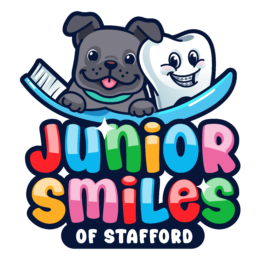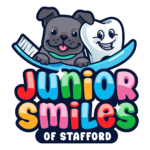Dealing with Abscessed Tooth in Children: Treatment and Care

Make an immediate appointment with your child’s dentist if you see any signs of acute dental pain. Serious dental problems, such as dental abscesses, might manifest as toothaches. Pustules that develop within the teeth, gums, or jawbone as a result of a bacterial infection are known as dental abscesses. This might be because of bad dental care that causes cavities to go untreated, an injury to the mouth, or food stuck deep in the gums. Abscesses in the teeth can be painful, however this is not always the case. Seeking prompt dental care for your child can greatly benefit their oral health. This page will teach you all you need to know about pediatric dental abscesses, including what they are, how to spot them, and how to treat them.
Causes and Risk Factors of Abscessed Teeth
If you ignore a cavity, it will grow until it touches the pulp of your tooth. This is a common way for germs to get into the tooth pulp, which can cause inflammation, pulpal necrosis (death of the pulp), and, in severe cases, an abscess. An abscess in a child’s tooth can develop for a number of reasons, including not getting enough dental care, eating a lot of sugary snacks and drinks, and experiencing stress to the tooth from an incident that chips the enamel or causes other damage. Infection can develop in the tooth pulp—a network of blood vessels, tissues, and nerves—if the tooth is fractured or if gum disease is present.
If left untreated, tooth abscesses can cause a host of problems including the following:
- Spread of the tooth infection to the jaw bone
- Spread of infection to adjacent soft tissues
- Blood infection
- Loss of tooth
- Brain abscess
- Pneumonia
- Heart inflammation
What Does an Abscessed Tooth Look Like? Signs and Symptoms
Abscessed teeth in children are characterized by redness, swelling, and discomfort in the gum tissue. You can mistake this as a pimple on your kid’s gums. You could also notice that their face is red, puffy, and sensitive to the touch. When they chew or eat, the pain could radiate into their jaw and make it worse. They could find that the pain is worse when they lie down, that they can only sleep on one side, or that it prevents them from sleeping altogether.
Rarer side effects include nausea, constipation, diarrhea, trouble breathing or swallowing, and an increased sensitivity to temperature changes in meals. A decrease in hunger and, ultimately, weight loss, can occur in children who have abscessed teeth. Your kid could notice a change in their breath and even an unpleasant taste in their mouth.
Tooth and Gum Abscess Stages
A tooth abscess develops over time, following a predictable pattern of dental issues. To avoid getting an abscess, it helps to know how they form and go through every phase.
Enamel Decay
As the tooth’s outermost layer, enamel is the first to sustain damage. Your child’s gums and teeth will become infected with plaque if they do not clean their teeth regularly. Damage to tooth enamel and subsequent decay, known as cavities, are consequences of plaque’s acidity. Even though your child may not always show signs of enamel degradation, you may notice that their teeth are more sensitive than usual or that white patches appear on their teeth.
Dentin Decay
Dentin is the tooth’s secondary protective coating. Bacteria in enamel degradation can spread to the second layer of teeth if not addressed. In addition to causing discomfort or sensitivity, dentin degradation can actually lead to a hole being formed in the tooth.
Pulp Decay
The pulp is the tooth’s innermost layer. When germs infect the pulp, they have the potential to harm the tooth’s nerve. If the problem continues, an abscess will develop and the nerve in the tooth will die. Because it is the interior layer of the tooth that houses nerves and blood vessels, inflammation or infection of the pulp can cause excruciating pain to your child.
Abscess Formation
At this point, your child’s immune system is doing its best to recover from the illness. Soon, pus will start to drain out, and an abscess will grow. There may be some swelling, throbbing discomfort, and the appearance of a little bump at this point.
How to Treat an Abscessed Tooth
Eliminating the infection and alleviating pain are the primary goals of treatment for a tooth that has developed an abscess. A dental X-ray may be ordered by the dentist as a first step, depending on your child’s symptoms. They can use this information to determine if the illness has moved to other parts of the body.
Drainage
In order to let the pus drain out of an abscess, the dentist creates a little incision. After that, the dentist will use saline water to rinse the region. A more permanent remedy may often be booked after this, though, so it’s not always a permanent fix.
Root Canal Procedure
To perform a root canal, a dentist will drill into the tooth to access the pulp chamber, remove diseased pulp, and drain the abscess. The pulp chamber and root canals of the tooth are subsequently filled and sealed by the dentist. A crown, which strengthens teeth, may also be placed on your child’s tooth.
Extraction
It may be necessary to pull the tooth if the infection has progressed to a critical stage and the tooth is in dire straits. To make sure your kid is relaxed and comfortable during the treatment, the dentist will provide the appropriate anesthesia and/or sedative.
Home Remedies for Abscessed Tooth in Children
There are a number of things you can do at home to help alleviate your child’s pain when they have an abscessed tooth. Avoiding very cold or very hot meals and drinks is the first and most critical step in protecting the teeth from further damage. Choose soft meals that don’t need much chewing and remind your youngster to use the other side of their face when chewing. Changing to a gentler toothbrush could be helpful, and if your kid is already experiencing discomfort, it’s best not to floss in the region. Put an ice pack on the sore spot for up to 20 minutes at a time, many times a day, to reduce swelling and discomfort.
Be careful when using medications or ointments to the abscess, either topically or inside, and always get your doctor’s approval beforehand. An additional simple yet effective solution to incorporate into your child’s care regimen is washing with warm salt water. This can provide some comfort by decreasing inflammation, gum swelling, and pain.
Preventing Abscessed Tooth in Children: Oral Hygiene Tips
Preventing an abscessed tooth in children is crucial for maintaining their overall oral health. Here are some tips to help:
Encourage Your Child to Regularly Brush and Floss
Teach children to brush their teeth twice a day using fluoride toothpaste. Make sure they brush for at least two minutes each time. Also start flossing children’s teeth once they have two teeth that touch. This helps remove food particles and plaque between teeth where a toothbrush can’t reach.
Prepare Balanced Diet
Limit your child’s sugary snacks and drinks, as sugar contributes to tooth decay. Instead, encourage a diet rich in fruits, vegetables, and calcium to strengthen teeth. Prepare healthy meals by incorporating their favorite snack, so they would become more motivated to eat healthy.
Have a Regular Dental Check-ups
Schedule regular dental check-ups every six months for professional cleaning and to detect any early signs of tooth decay or abscesses. The dentist can also educate your kid on how to properly take care of their teeth.
Prioritize Proper Hydration
Encourage your child to drink water, as it helps rinse away food particles and bacteria. Plus, drinking the right amount of water everyday keeps them hydrated. As much as possible, stray away from juices and sodas.
Pediatric Dental Abscess FAQs
Are abscesses common in children?
Children are more prone to abscess as they are not yet capable of thoroughly cleaning their teeth and gums. Get your child checked out right away if you think they could have a dental abscess.
Is a tooth abscess an emergency?
Yes. If your child is experiencing any symptoms related to this, it is crucial to take immediate action by contacting their dentist. By promptly informing the dentist about your child’s symptoms, you can ensure that they receive the necessary attention and care. When a tooth abscess is not promptly addressed, it has the potential to spread to various areas of the body, resulting in potentially severe medical complications. Tooth abscesses, although rare, have the potential to give rise to serious health complications, including brain abscesses and Ludwig’s angina, which can be life-threatening.
What antibiotics are used for tooth abscess in children?
Penicillin-based antibiotics, including penicillin and amoxicillin, are widely prescribed for the treatment of tooth infections. These medications belong to the esteemed penicillin class, renowned for their efficacy in combating bacterial infections.
Act Now for Your Child’s Dental Health with Junior Smiles of Stafford
Dealing with a dental abscess in a child requires prompt attention and care. It’s essential to recognize the signs and symptoms early and take immediate action. Regular dental check-ups, good oral hygiene, and a balanced diet play a crucial role in preventing dental abscesses. It’s important to remember that dental abscesses are not just about oral health but can have far-reaching effects on your child’s overall health and well-being.
At Junior Smiles of Stafford, we understand the importance of your child’s dental health and are committed to providing the best pediatric dental care in Stafford, VA. Our expert team is equipped to handle all aspects of pediatric dentistry, from routine check-ups to treating dental abscesses. We believe in a proactive approach to dental care, ensuring that your child’s teeth remain healthy and strong.

